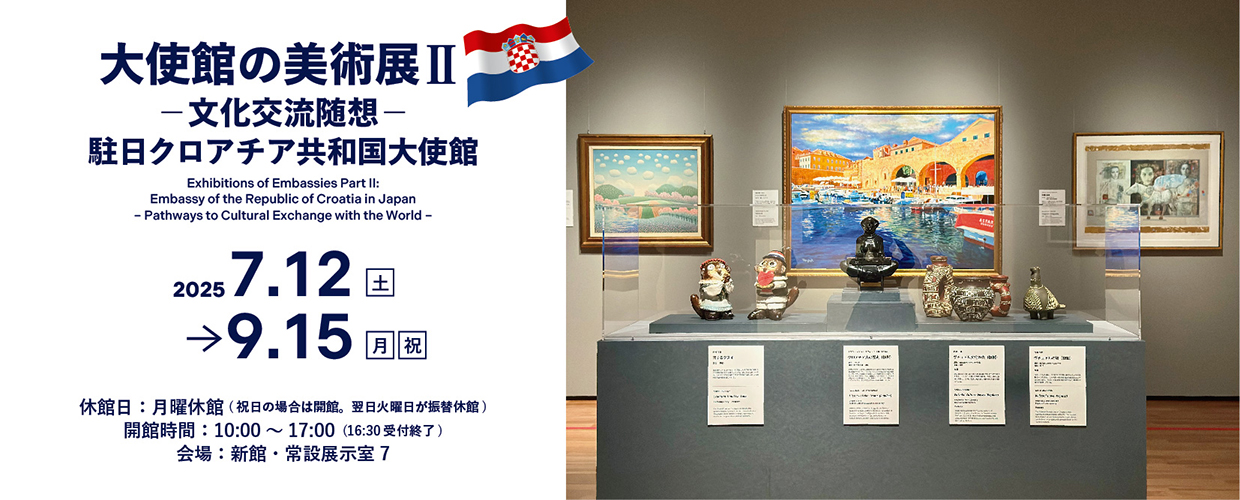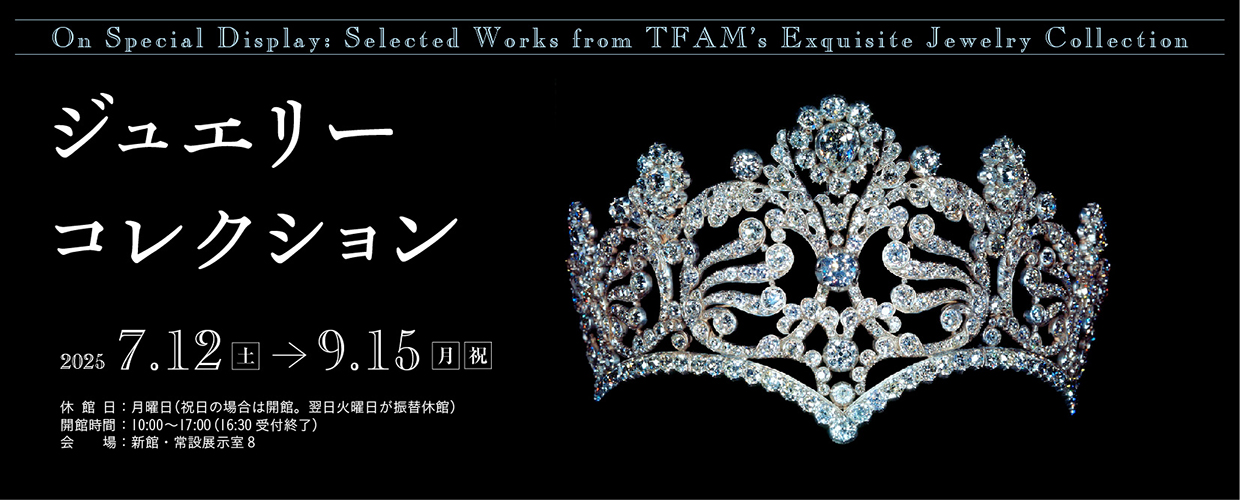c. 1902/Ink and light color on silk, hanging scroll
143.5 x 68.8 cm
SUMMARY
Famous from the Noh piece Hagoromo, Miho-Matsubara is a popular theme for painting, and its exquisite view of white sand and green pine trees in the foreground and Mount Fuji in the background remains to this day. Hashimoto Gaho sublimated this traditional motif with his modern sensitivity, eradicating every outline and keeping color to a minimum. As if conscious of aerial perspective he expresses the space in gradual blur from the foreground to the middle and away into the distance.
ARTIST
Hashimoto Gaho
1835-1908
Born in Edo, Hashimoto Gaho learned the painting techniques of the Kano school from his father Hashimoto Osakuni , and at just thirteen years of age became a student of Kano Tadanobu. He was known to be the most gifted student of his studio, and became an independent painter at twenty-six. Later he was introduced to Ernest Fenollosa, an American art historian who specialized in Japanese art, and Okakura Tenshin, which led to him taking up a position at the Tokyo School of Fine Arts which was founded in 1888. As an instructor there he educated many talented artists such as Yokoyama Taikan. In 1898, he stepped down from this post together with Tenshin as a result of tensions in the school, and became an executive member of the Japan Art Academy. He is referred to as the father of modern Japanese-style painting.
List of artworks by the same artist
INFORMATION

Friday, July 28 - Sunday, August 27, 2023
Masterpieces of Modern Eastern and Western Painting Exhibition Ishikawa Prefectural Museum of Art (Ishikawa, Japan)
Monday, June 1 - Sunday, July 5, 2020
Great Masters of Japanese Painting from the Tokyo Fuji Art Museum Collection Shimane Art Museum (Shimane, Japan)
Saturday, March 16 - Wednesday, May 8, 2013
Nihon-ga Masterpieces of Tokyo Fuji Art Museum The Niigata Prefectural Museum of Modern Art (Niigata, Japan)
Saturday, October 10 - Sunday, November 29, 2009
Excellent Works of Modern Japanese Paintings Nariwa Museum (Okayama, Japan)
EXPLORE

You can search and browse content on a platform across museums and archival institutions nationwide, and create My Gallery (online exhibition).






